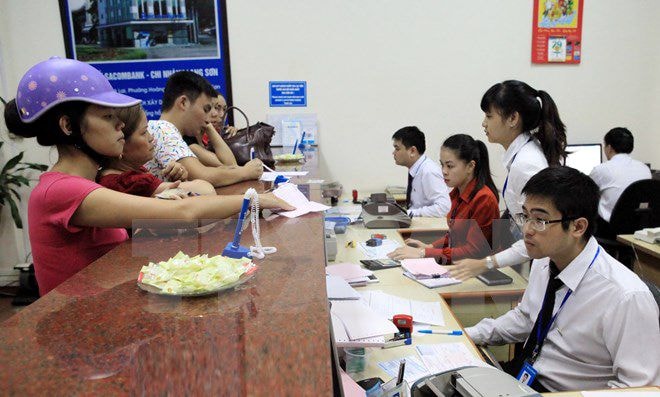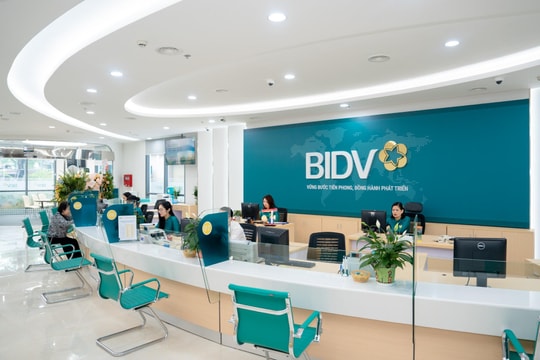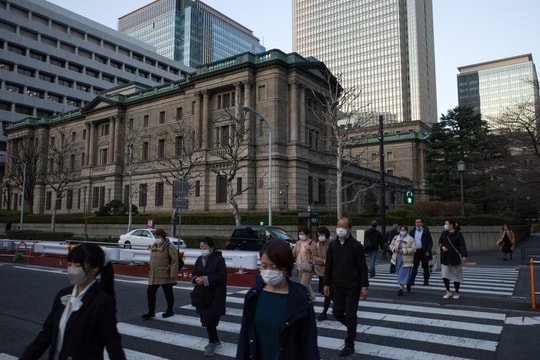Bank restructuring: The finish line is near
(Baonghean) - In the process of restructuring the economy associated with renewing the growth model towards improving quality, efficiency and competitiveness, one of the three key areas is restructuring the financial market, focusing on restructuring the banking system and financial institutions. According to Associate Professor, Dr. Tran Hoang Ngan, Principal of the University of Finance and Marketing, Ho Chi Minh City, after nearly four years of implementation, among the three pillars of the economy that must be restructured, banking restructuring has achieved success in both quality and quantity, in accordance with the proposed scenario.
Restructuring the system of commercial banks (CBs) is one of the important contents of the restructuring process of the Vietnamese economy that has been clearly identified. Accordingly, in the period of 2011 - 2015, the focus will be on improving the financial situation and strengthening the operational capacity of credit institutions (CIs), especially improving the safety and operational efficiency of CIs. Along with that, improving the management of order, discipline and market principles in banking activities. To achieve the above goal, many restructuring solutions have been proposed, such as: encouraging mergers, consolidations, and acquisitions of CIs on a voluntary basis, ensuring the rights of depositors and the economic rights and obligations of related parties in accordance with the provisions of law.
 |
| Customers transact at Techcombank Nghe An Branch. Photo: Quynh Lan. |
In parallel with the restructuring process, the banking system has actively and effectively implemented solutions to curb the increase of bad debt, improve credit quality and handle bad debt. By the end of August 2015, the system of credit institutions had handled over 400 trillion VND of bad debt, equivalent to over 90% of the total bad debt. Of which, the system of credit institutions had handled nearly 60% of the total bad debt; the remaining debt was sold to the Vietnam Asset Management Company (VAMC), bringing the bad debt ratio to 2.9%, completing earlier than the set target (by the end of 2015, it reached below 3%).
It can be affirmed that the process of restructuring and handling bad debts of the banking system has achieved certain success, in accordance with the "physical condition" and economic situation of our country. In the context of no "fresh money, real rice", the way to restructure banks and handle bad debts with the safety of the banking system as the top priority is the optimal solution. Recently, with the Government amending and supplementing the regulations of VAMC, creating a legal basis for VAMC to operate effectively, speeding up the progress of handling bad debts is a favorable first step and increasing the authority of VAMC in the process of handling bad debts. In the coming time, when the difficulties and obstacles in handling bad debts are resolved by all levels and sectors, production and business activities are strongly improved, the debt trading market is formed and developed, the situation of handling bad debts of credit institutions in general and the handling of purchased bad debts as well as the purchase and sale of bad debts at market prices of VAMC will bring more positive results.
It can be affirmed that the banking sector has basically completed the goals and tasks assigned by the Party, the State and the industry, in which the two years 2014 - 2015 were the years that most clearly demonstrated the results of monetary and credit policy management and restructuring of the banking system. This result has contributed significantly to increasingly stable macroeconomics and strengthened the trust of the entire political system and people in the banking sector. The results achieved in the period 2011 - 2015 will create a solid foundation for the banking sector to successfully implement the banking restructuring target in the period 2016 - 2020.
Early concretization of the Law on Public Investment
In 2016 and the following years, to successfully implement the second phase of the banking system restructuring project, it is necessary to have a combination of solutions from the entire economy, not just the banking system. In particular, the Government continues to improve institutions, creating a fair and transparent investment and business environment. When the business environment is more stable and favorable, enterprises will increase capital investment. In addition, the process of restructuring the economy must take place synchronously, not only accelerating the restructuring of the banking system but also the public investment sector and state-owned enterprises need to take place more strongly.
Regarding the issue of restructuring public investment, it is necessary to promptly implement the Law on Public Investment, ensuring the right people for the right jobs, in order to increase the efficiency of using investment capital. From here, it is necessary to clarify the responsibilities of organizations and individuals related to ineffective public investment projects, slow progress causing waste; at the same time, clearly define the responsibilities and powers of relevant agencies in the process of restructuring public investment. Regarding the restructuring of state-owned enterprises, the Government also needs to resolutely implement many reforms, especially administrative procedure reform. In the coming time, to effectively restructure state-owned enterprises, I think that we should not chase after achievements in terms of the number of equitized enterprises but must pay attention to quality, specifically business efficiency through the effective use of equitized capital. Another important issue is to change the governance and supervision model and ensure transparency and publicity at state-owned enterprises, so that people can supervise the business activities of the State. Only then can the problem of restructuring state-owned enterprises be solved.
 |
| Transaction at Sacombank Lang Son (Internet photo). |
In addition, it is necessary to continue to operate monetary policy to prioritize curbing inflation, stabilizing interest rates and exchange rates, and increasing people's confidence in the Vietnamese Dong. It is necessary to find a fundamental solution to solve the problem of banks' assets. Only then can we ensure the maintenance of stability, improve the financial capacity of banks, create a safe, healthy, and effective banking system, and make an important contribution to the country's economic development.
Red River
| RELATED NEWS |
|---|




.jpg)


